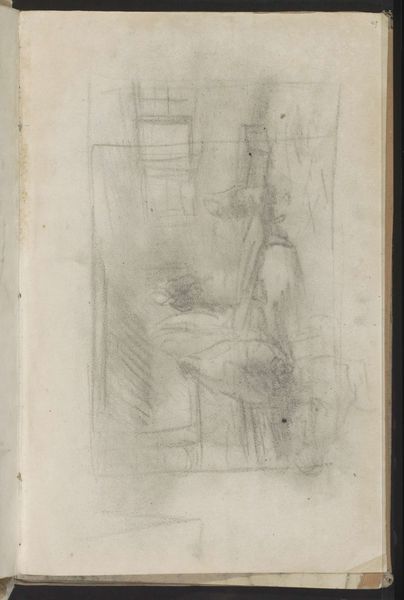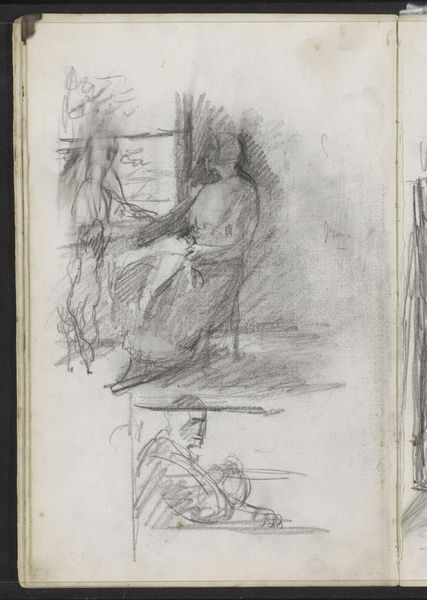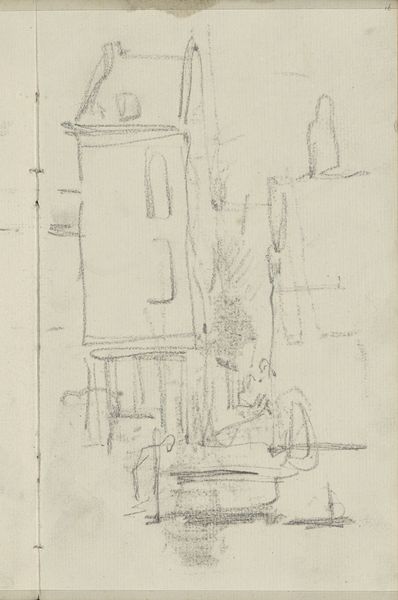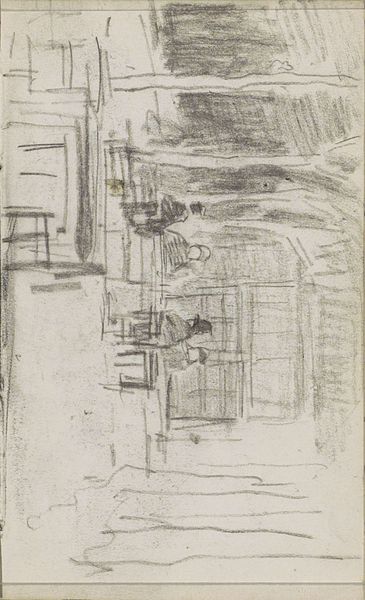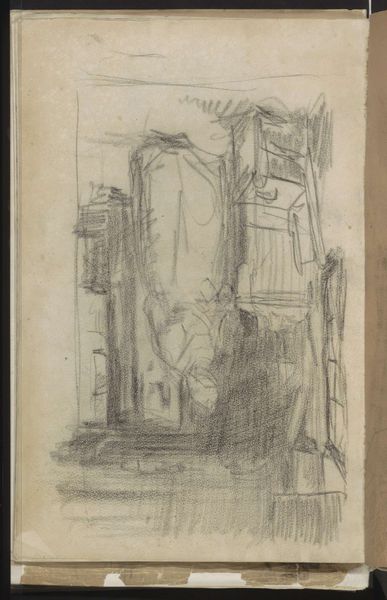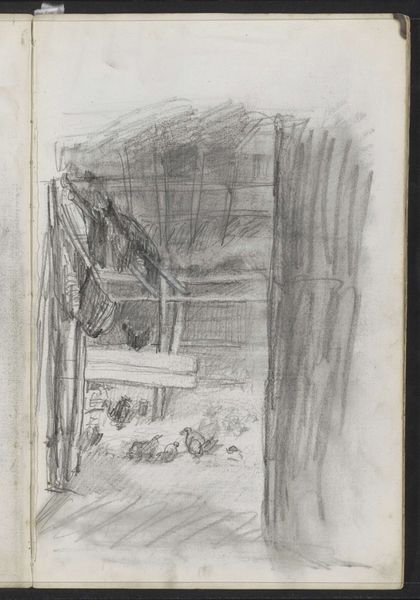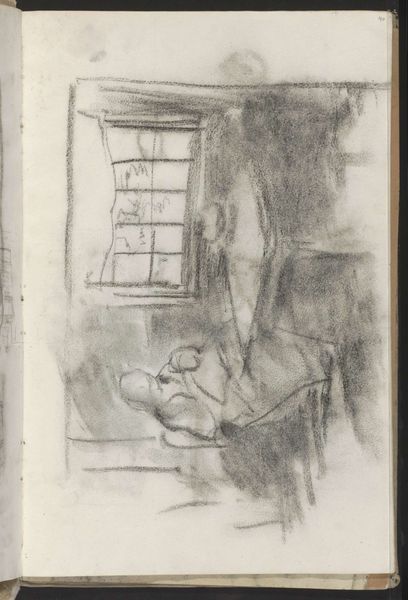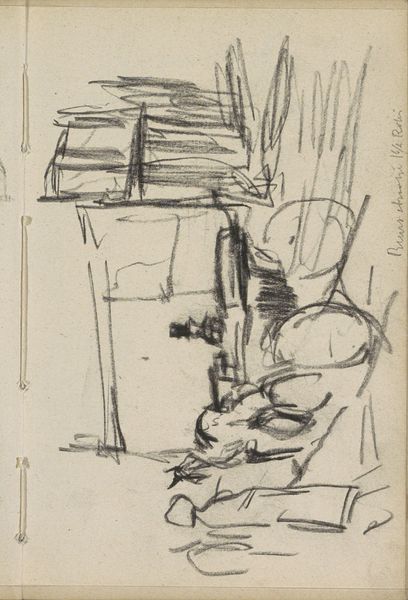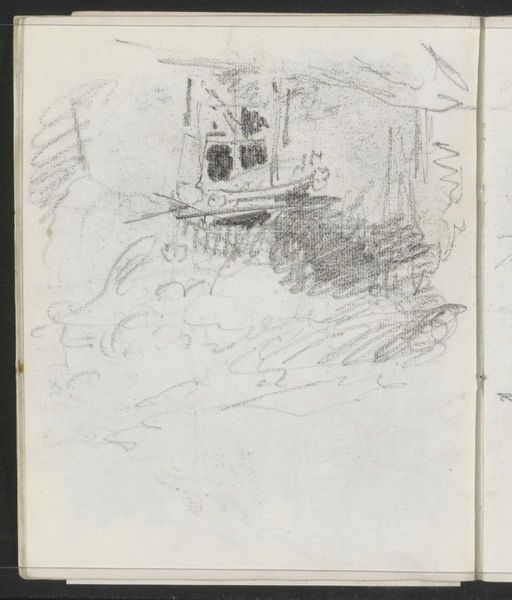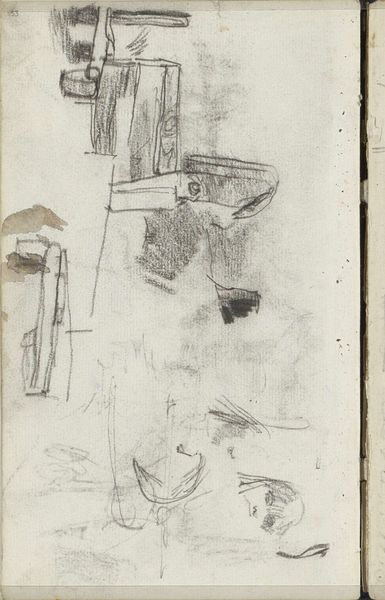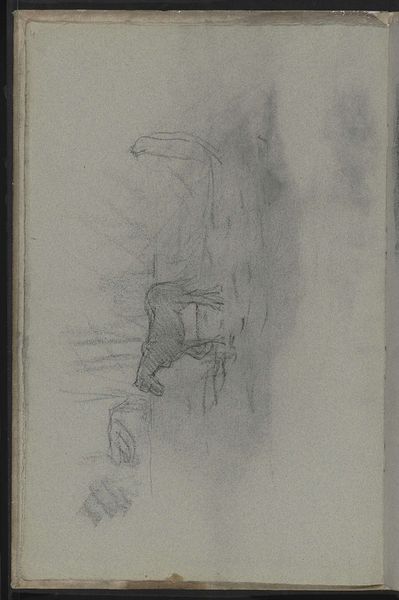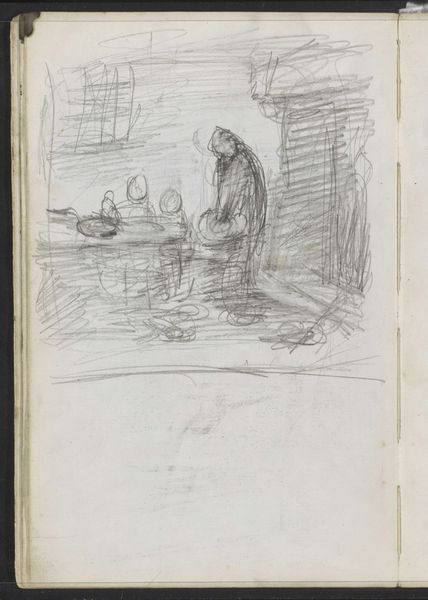
drawing, paper, pencil
#
drawing
#
dutch-golden-age
#
landscape
#
paper
#
pencil
#
genre-painting
#
realism
Copyright: Rijks Museum: Open Domain
Editor: This is "Tafel onder een venster bij een deuropening," or "Table under a Window by a Doorway," a pencil drawing on paper by Jozef Israëls, from around 1855-1859. It feels so raw, almost unfinished, and I’m drawn to the stark simplicity of it. What's your take on this piece? Curator: Israëls’s drawing, created during the rise of realism, shows a clear move away from idealized scenes. He wasn't just depicting a table; he was depicting *life*, unvarnished. Notice the presence of labor implied by the objects on the table and, sketched lightly below, a group of figures who seem to be engaged in common work. This wasn’t art for the elite. Why do you think representing these ordinary scenes started to gain traction with the public? Editor: Perhaps it was a reflection of a shifting social consciousness, a recognition of the working class and their everyday struggles. Curator: Precisely! Artists began using art as a tool to represent those previously excluded, challenging the status quo of art and even politics. Consider how the distribution of such images, even simple drawings like this, might have contributed to the growing awareness of social realities outside the comfortable spheres of the wealthy. The window motif, quite common in Dutch Golden Age painting, might also imply a social and aesthetic looking outward. Editor: I see that now; it's like he's bringing the outside world, or rather, the world *within* closer to the viewer. I initially saw a simple drawing, but now I understand it carries so much socio-political meaning! Curator: Exactly! Israëls wasn't merely sketching; he was participating in a larger conversation about representation, class, and the power of imagery. The Rijksmuseum's acquisition of it reflects how perceptions of what deserves preservation, collection, and analysis, evolve over time. Editor: That really changes how I view art, not just as aesthetic objects, but as reflections of their time, influencing, and being influenced by, society. Thank you!
Comments
No comments
Be the first to comment and join the conversation on the ultimate creative platform.
